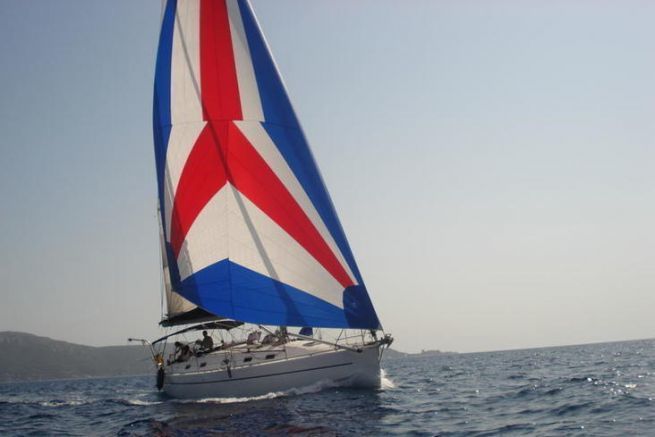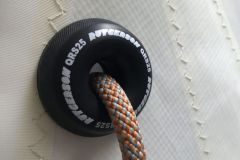Eric Varin is a master sailor at La Voilerie Granvillaise in Granville in the Manche (50). He designs, cuts, sews and repairs dozens of sails every year.

He also says that " A sail is to be maintained, respected and inspected ". It's amazing how many boaters don't even take the time to de-ice their boats when they're not sailing in the winter.
Beginning of the season
The first thing to do at the beginning of the season - around the beginning of March - is to drop off your set of sails at the sailmaker. " The principle is to have the entire rig checked "he explains. On the program of this control " Checking for suspicious rubbing, scratching, snags. All the little defects that are totally harmless when they are caught from the start but which can become real disasters if you wait. Most of the time , c t takes half an hour and there is no problem. It is also useful for us, because it allows us to follow, in time, the ageing of the fabrics, the seams and to always improve our methods. "

After each navigation
" When you return from each sail, especially if you have stayed for a long time with a half-furled sail because of a light breeze, unfurl the sail completely and roll it again. The sail will have been under a lot of tension during the sailing and the furling will be unevenly distributed. One part will remain very constrained (the one that remained at its post during the sailing) while the other one will have been able to shake in the wind. The risk is to create a zone of weakness between the two parts of the sail if this is repeated too often. "
Operation that can wait to come and clean the boat the next morning without any problem when there is no more breeze!
In addition to distributing the tension evenly over the sail, this operation dries out as much of the fabric as possible.
Beware of maritime rivers
Those who sail on rivers or whose harbors are lined with trees should beware of vegetation. " Pollen, algae, leaves and other fir needles are deadly to the tissue. As soon as a rhizome starts to settle in the sail, it is weakened very quickly "explains the specialist. Two solutions: a regular sweep of the sail or better, when possible " anchor away from trees and algae. "
All the maritime rivers are traps in that, since the Rance in Northern Brittany to Arzal through the Charente or the creeks. "I t is necessary to be attentive to this deposit which forms insidiously on the tissues "he insists.

Two absolute enemies of sails, sun and faseyement
Veils have two absolute enemies. Obviously, nothing can be done against sunlight ( whether direct or indirect by lunar reflection ), you can nevertheless think of rolling up your sails as soon as possible, to protect them a little and renew regularly the anti-UV strip of the headsails. " A good quality dacron does not survive more than two years in the sun "explains Eric " Each sail has a potential number of hours of sunlight. The heavier a fabric is, the more resistant it is to the sun. "
The calculation is simple. If a warp yarn is 1 millimeter in diameter and it cooks in one year, a sail that is one thickness of that yarn will be dead after one year. A sail that is 10 will last - theoretically - ten years. For a price that is not tenfold!
It should be remembered that the amount of ultraviolet - they are the ones who cook the fabric - is never zero as long as the boat is outside, whether it is during the day ( direct light ) or at night ( light reflected by the lunar star ).
The doughnut ( name of the slapping of the sails in the wind ) causes a slow but steady peeling of the primer that covers the sails, with each slap of the sail. Slap after slap, the coated fabric of the sail will be exposed to a little more tension, salt, moisture and aging. " A flapping sail is useless. Either you roll it or you tuck it in, you don't keep it in between "explains Eric.
The risk of dinging is not limited to the creation of weak points in the sail. In the long run, it will also deform, lose its intrinsic strength and thus its efficiency.









